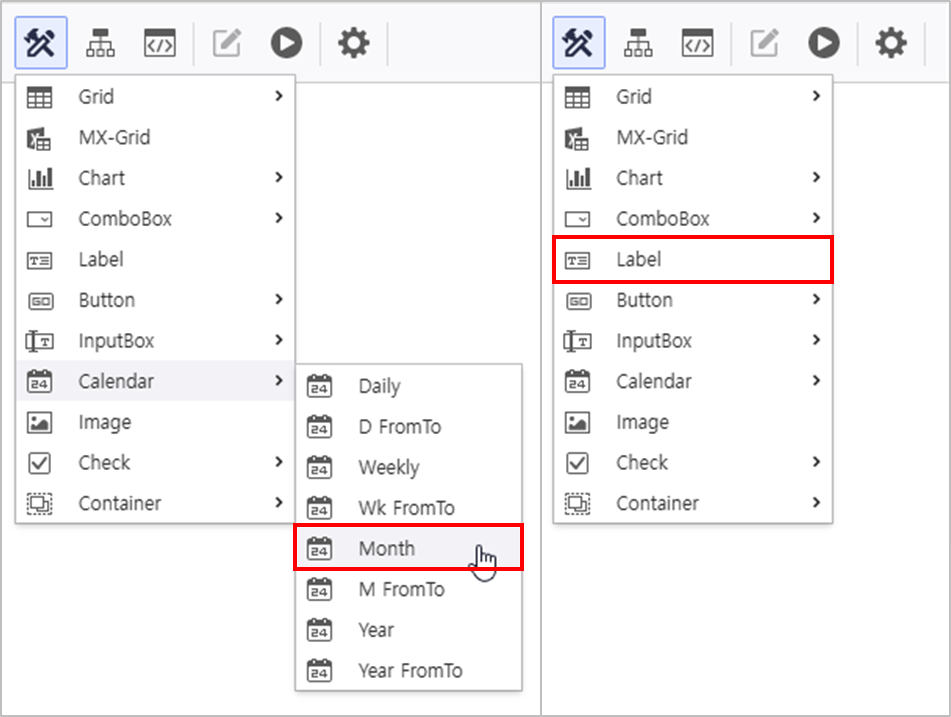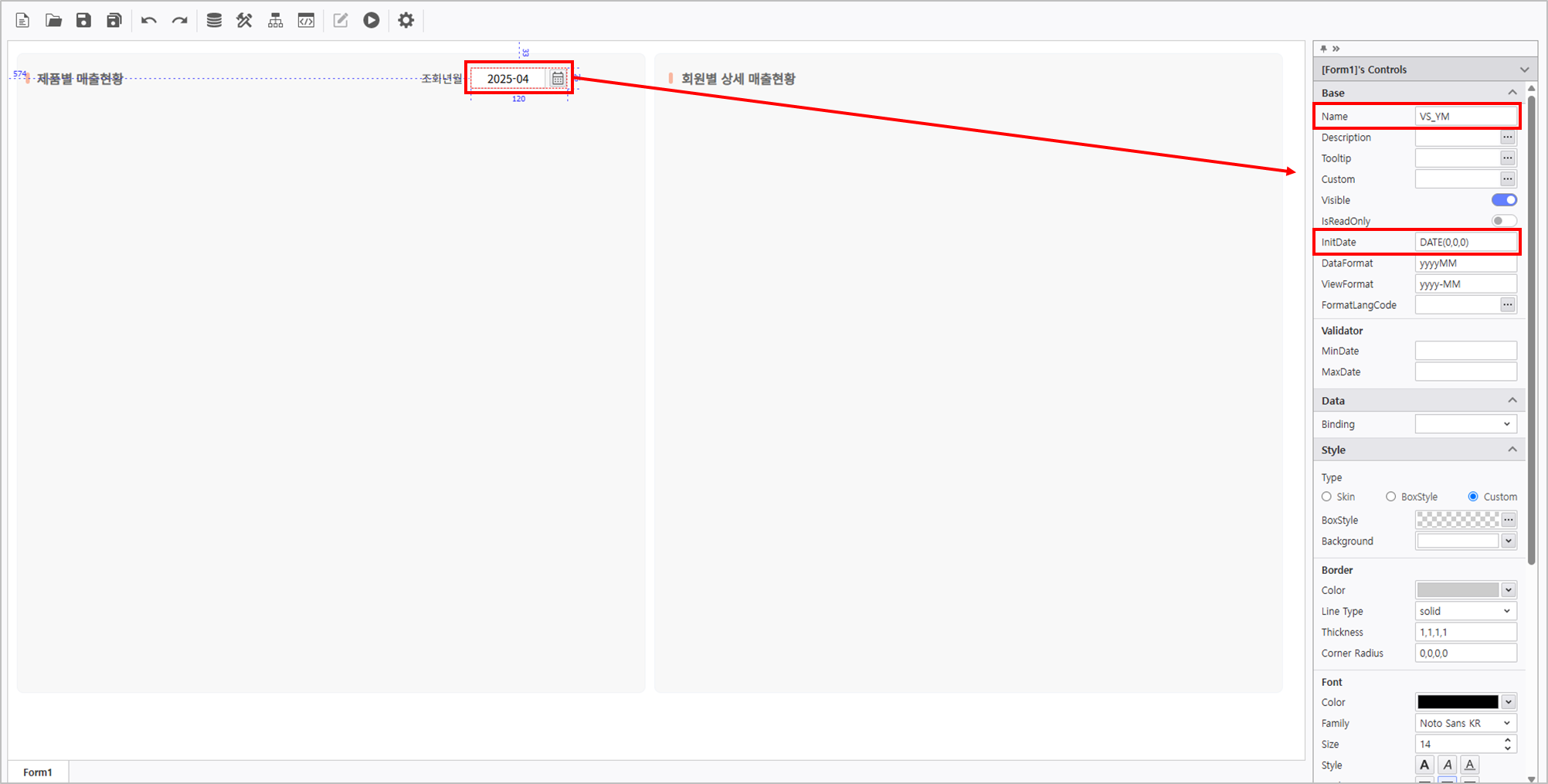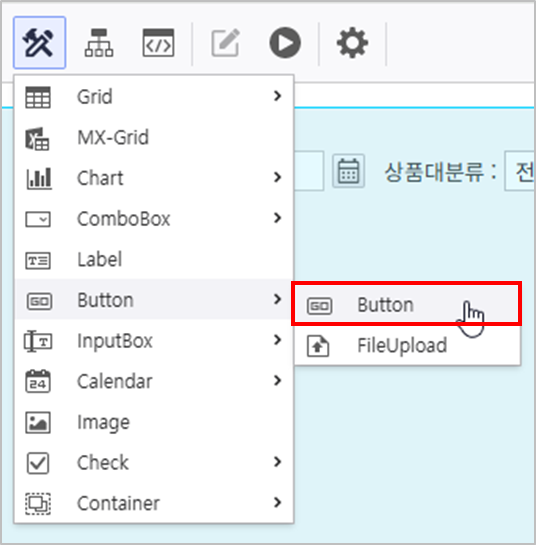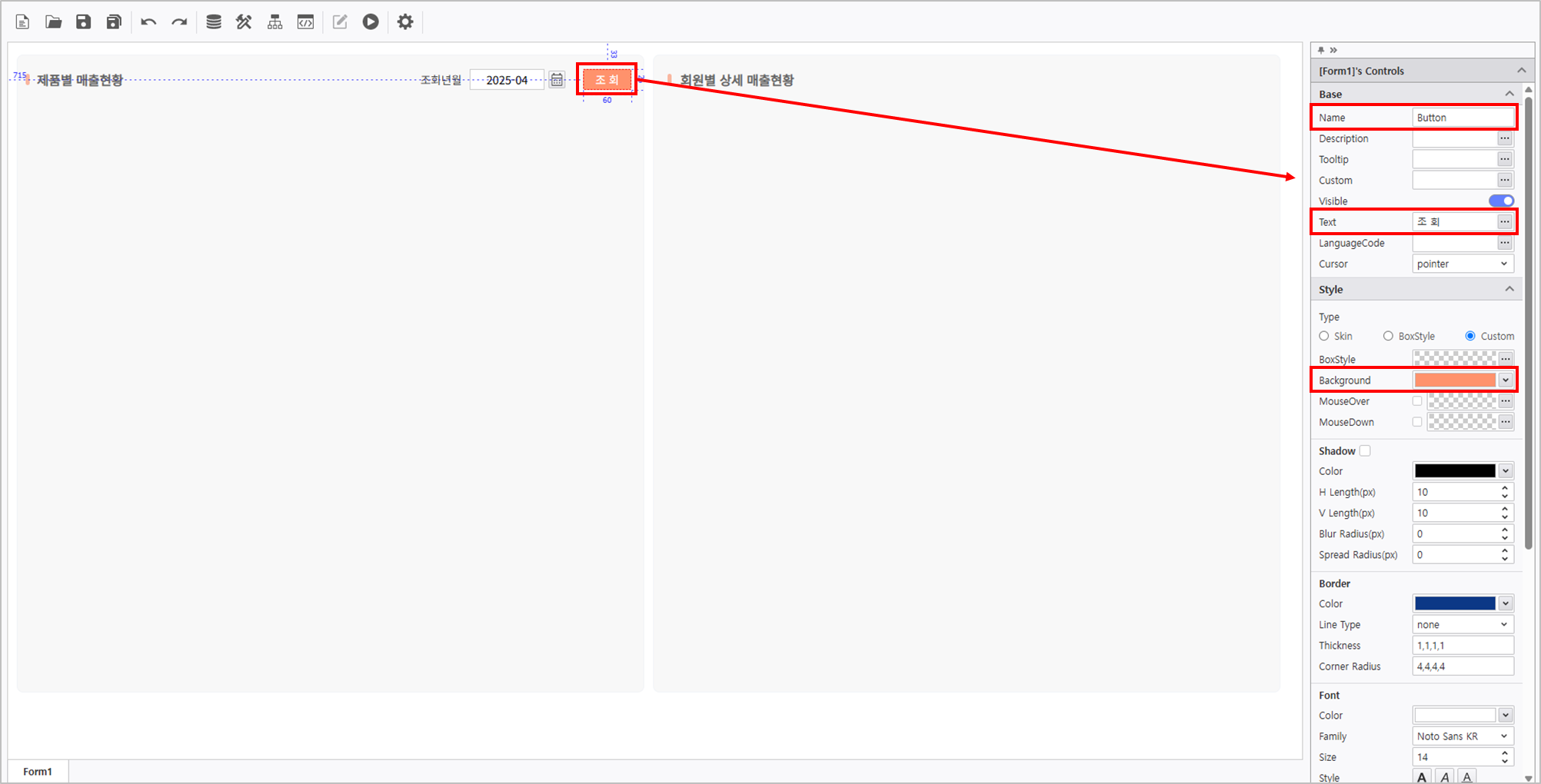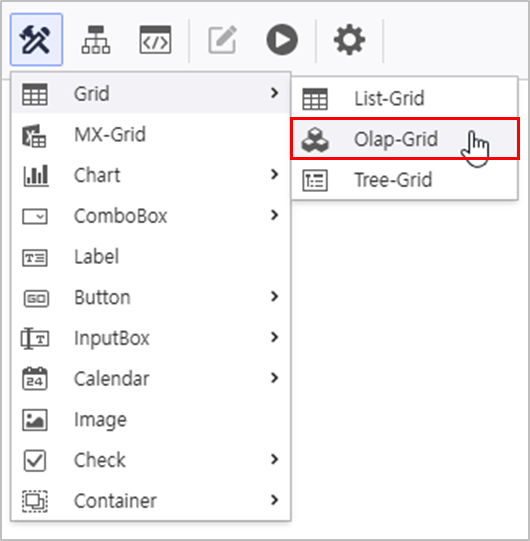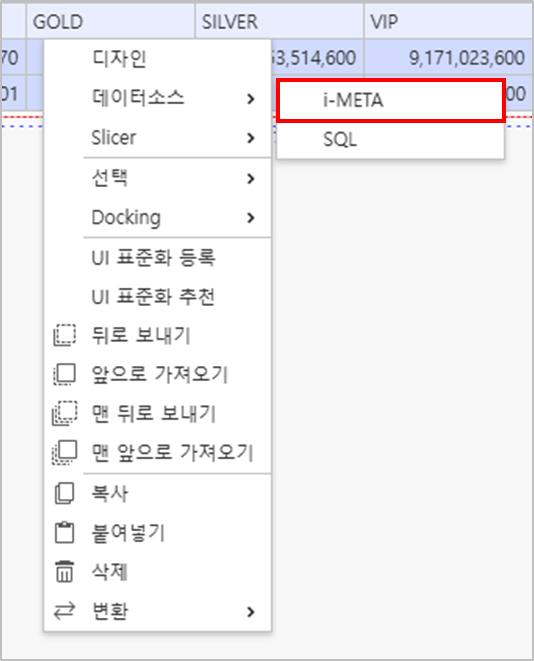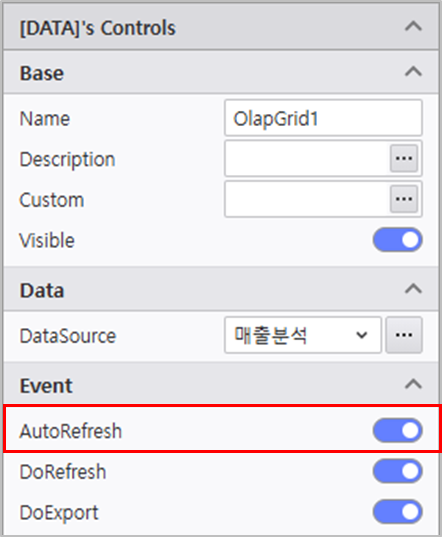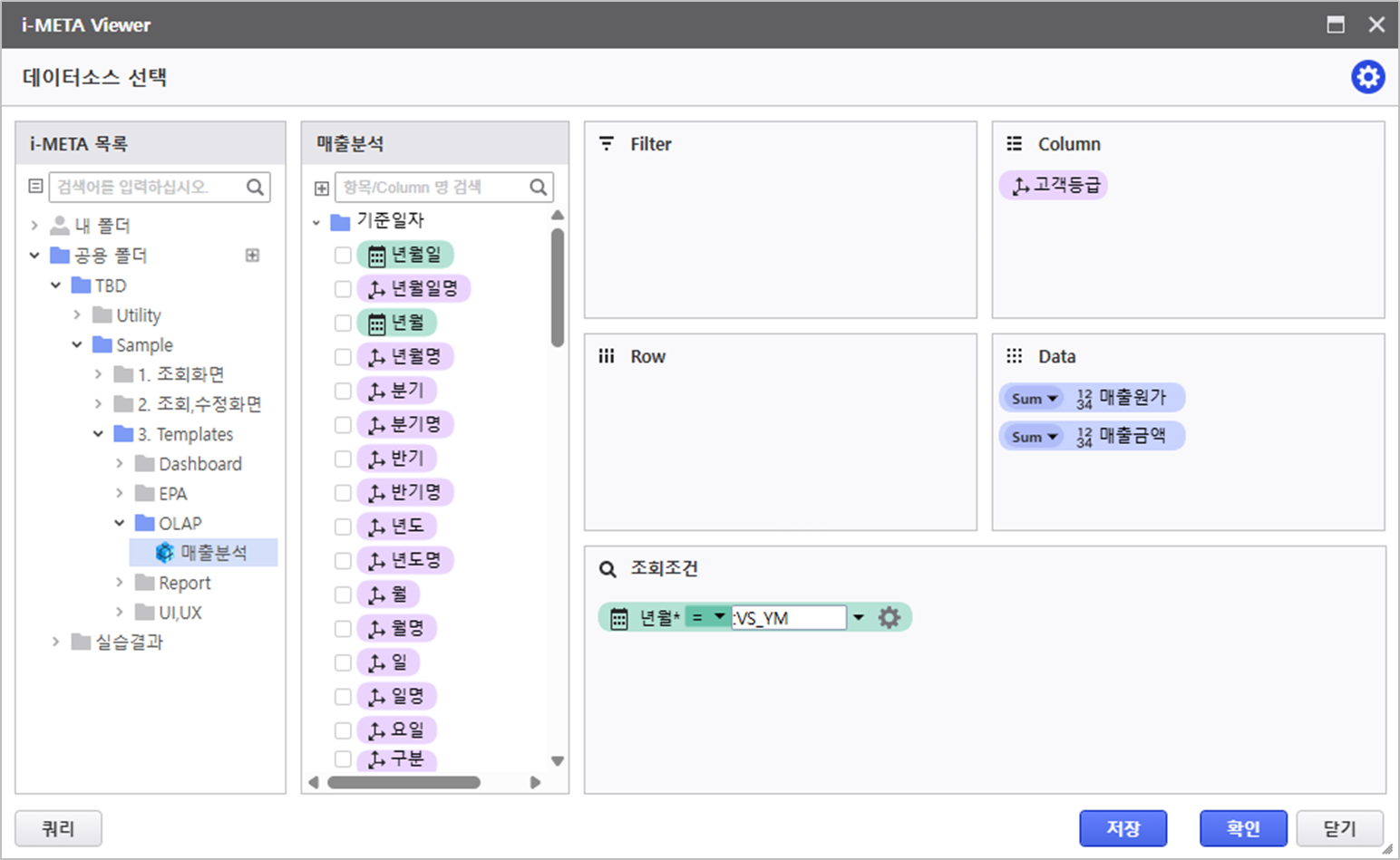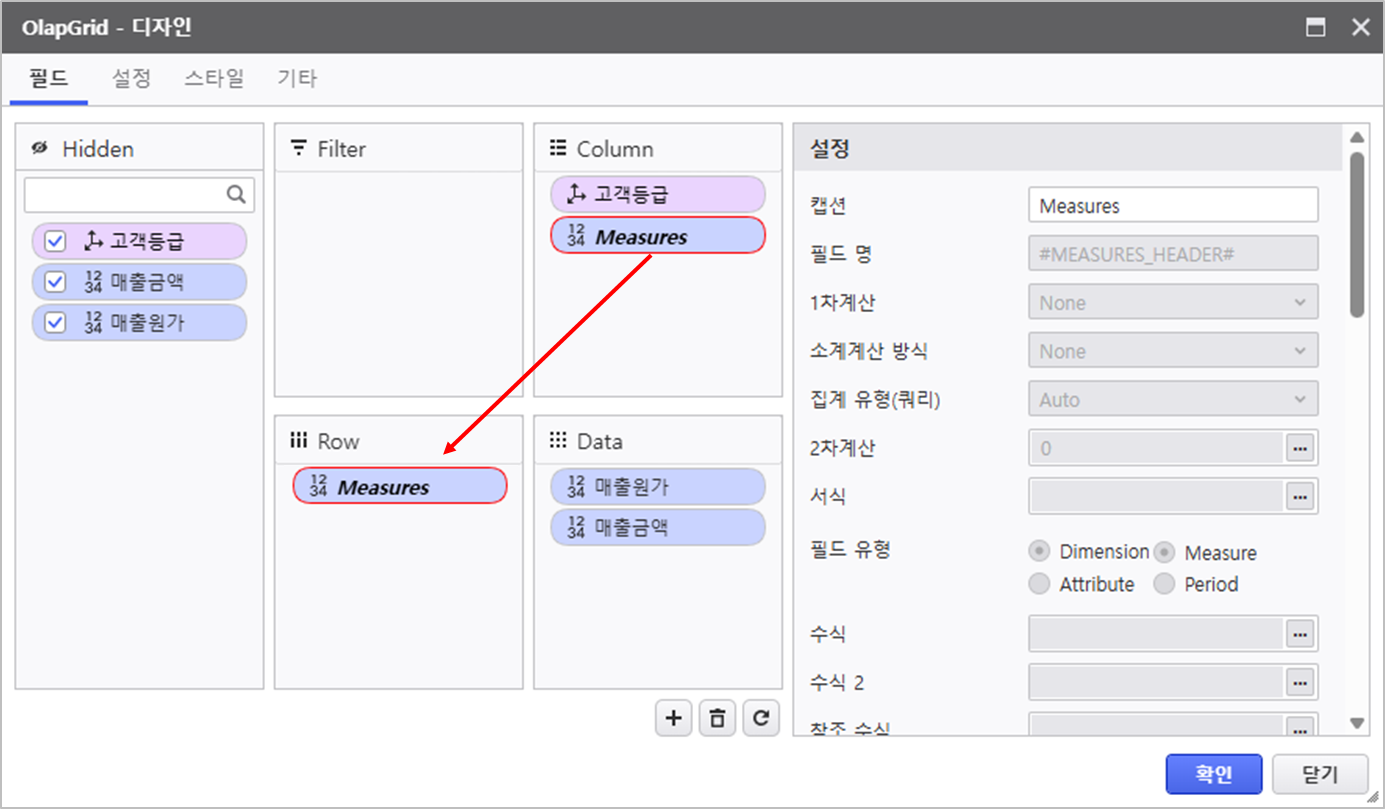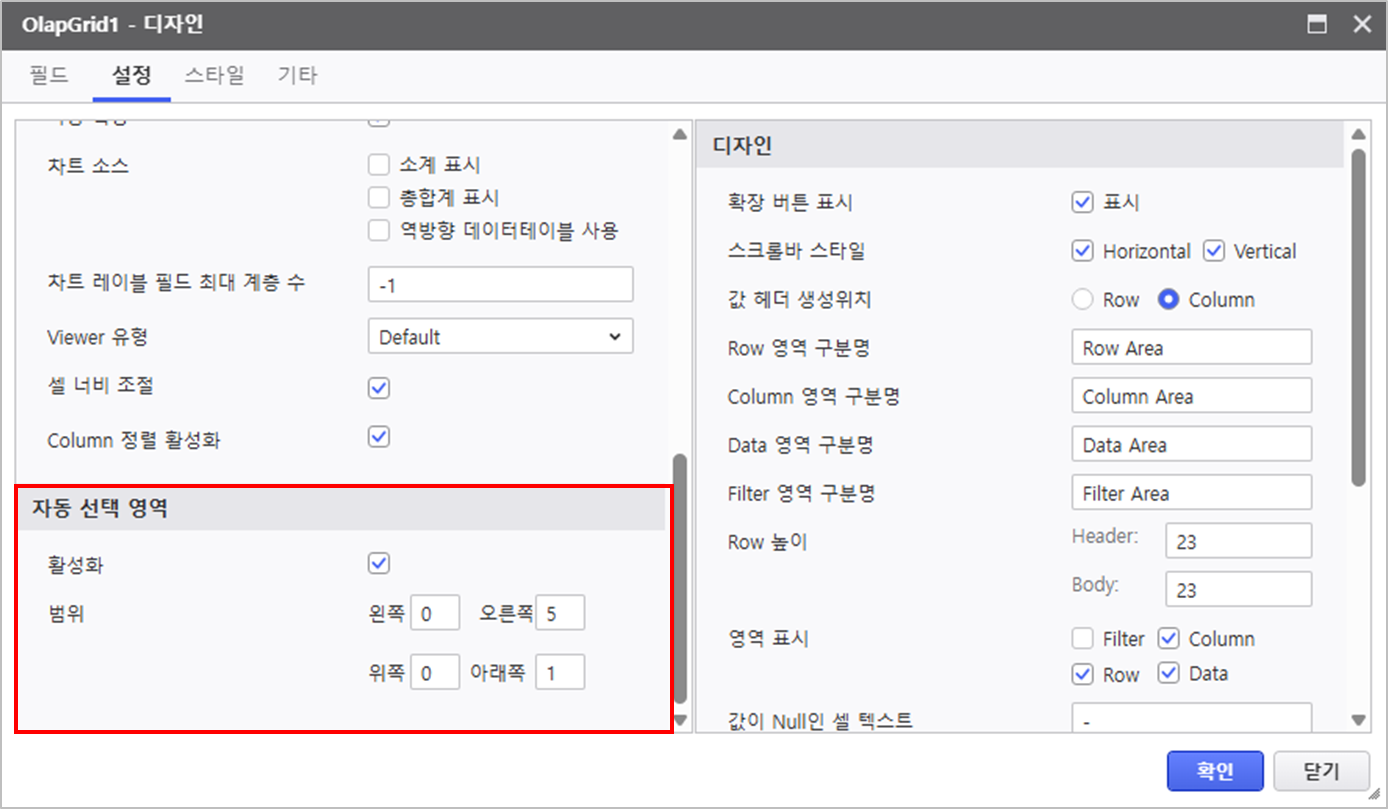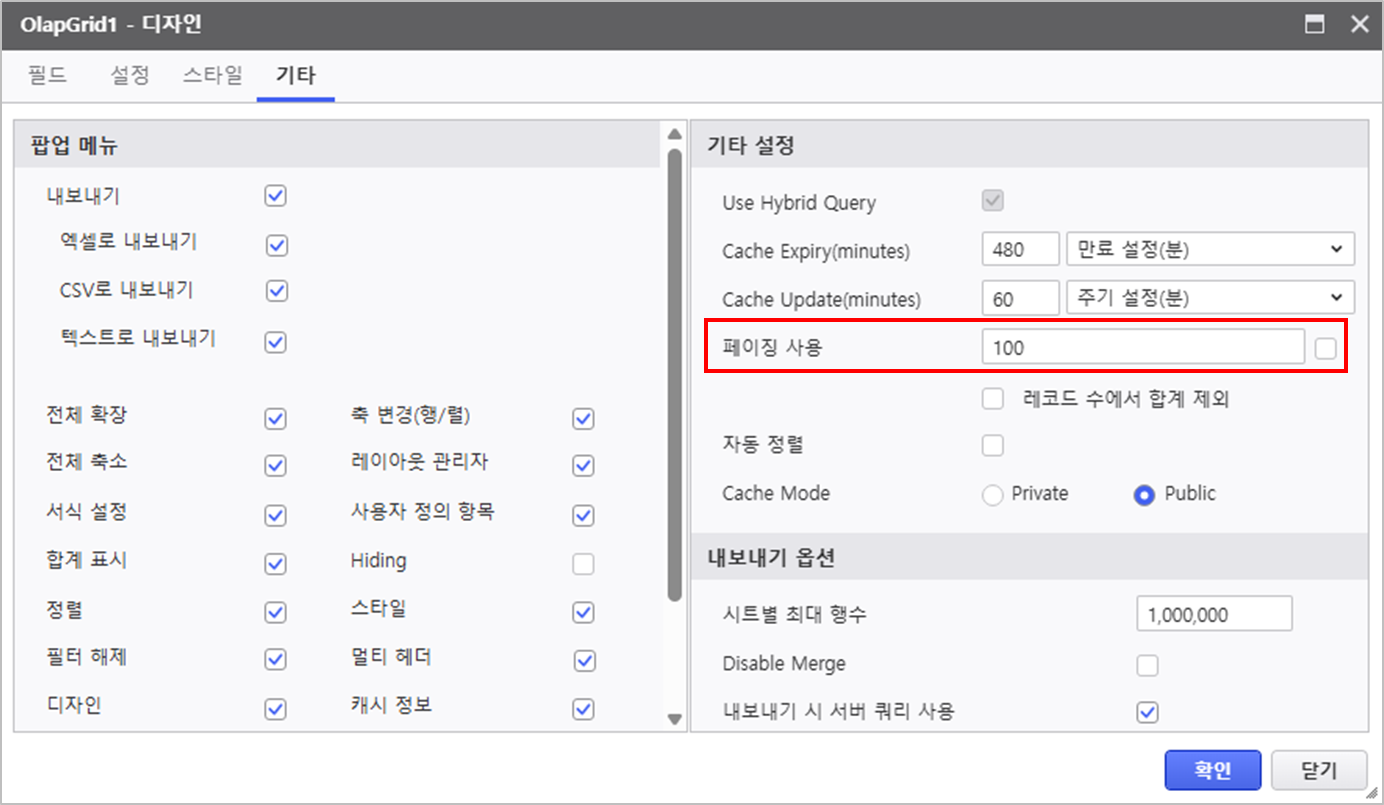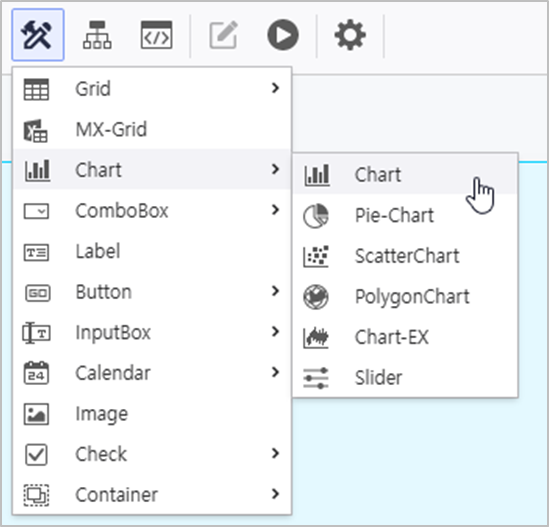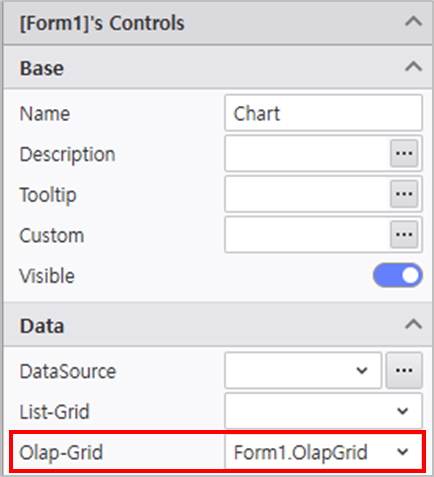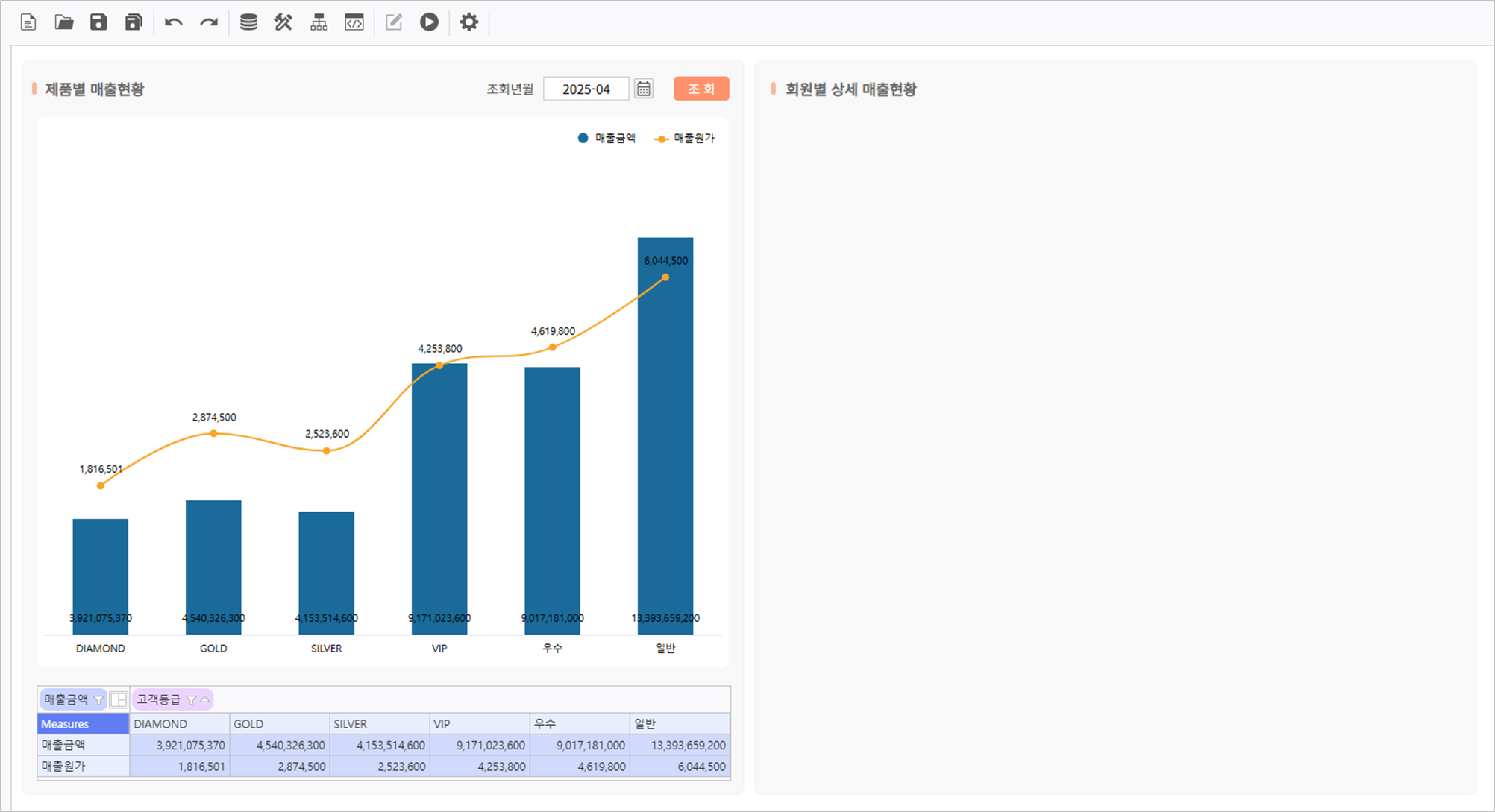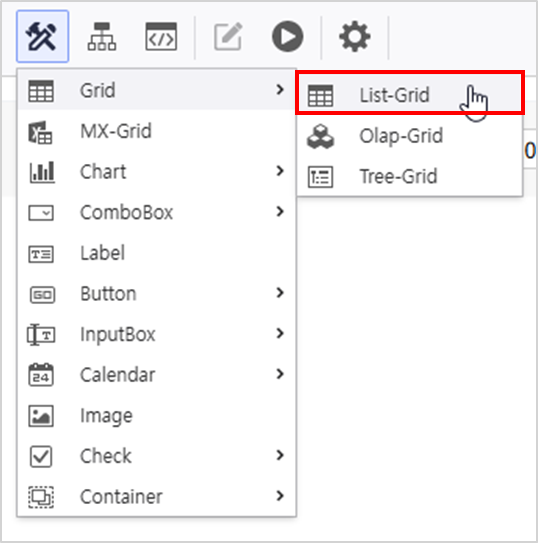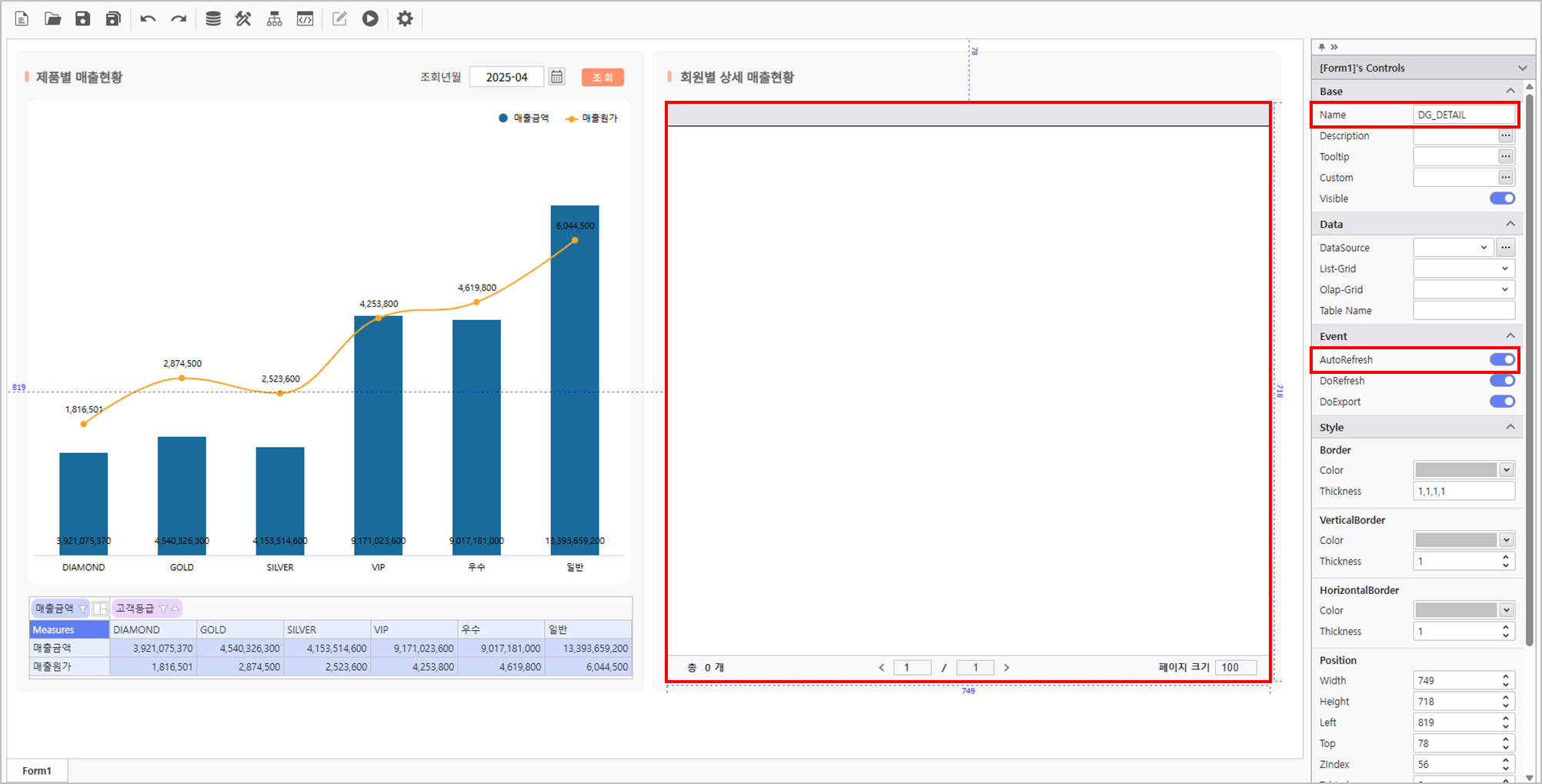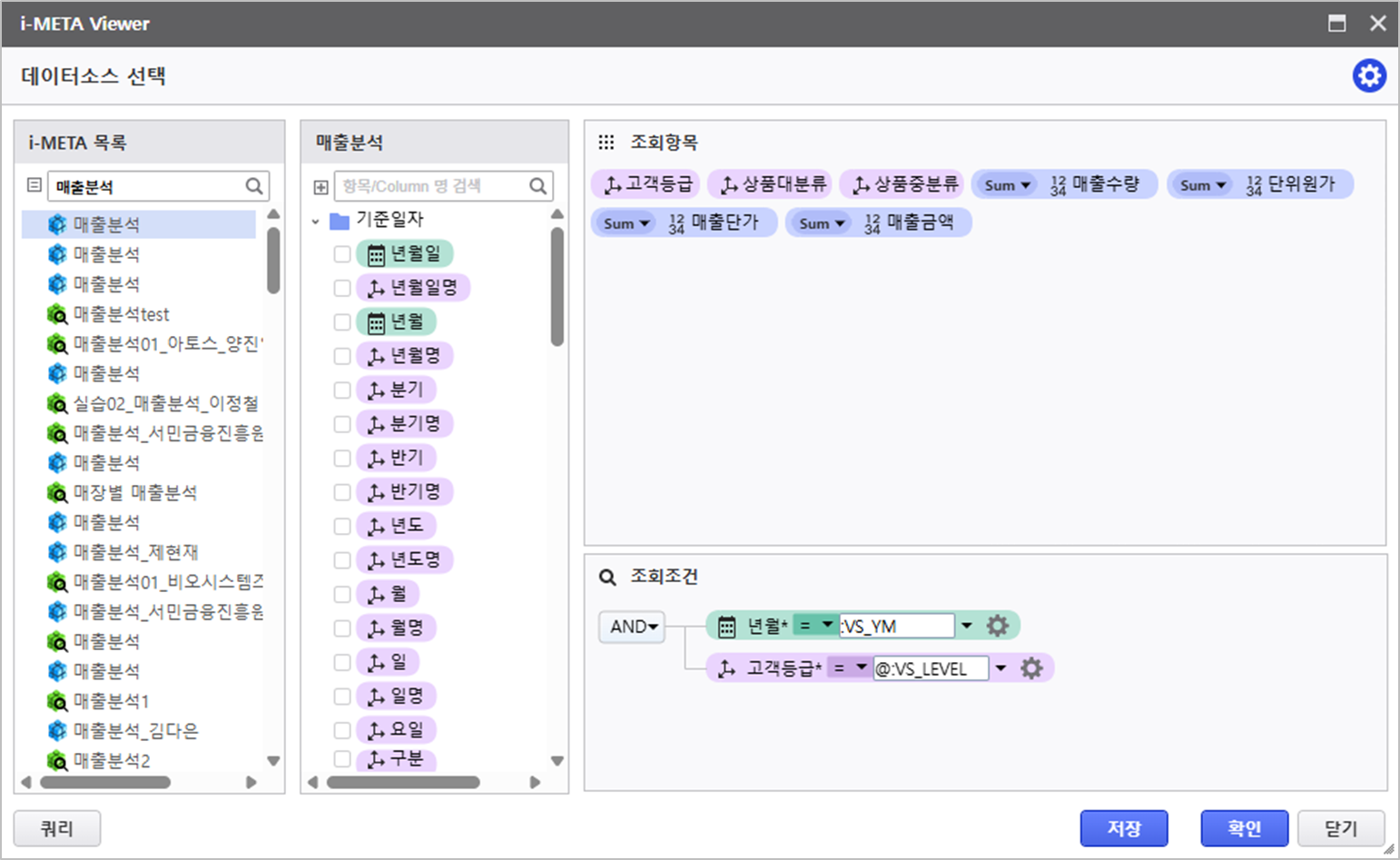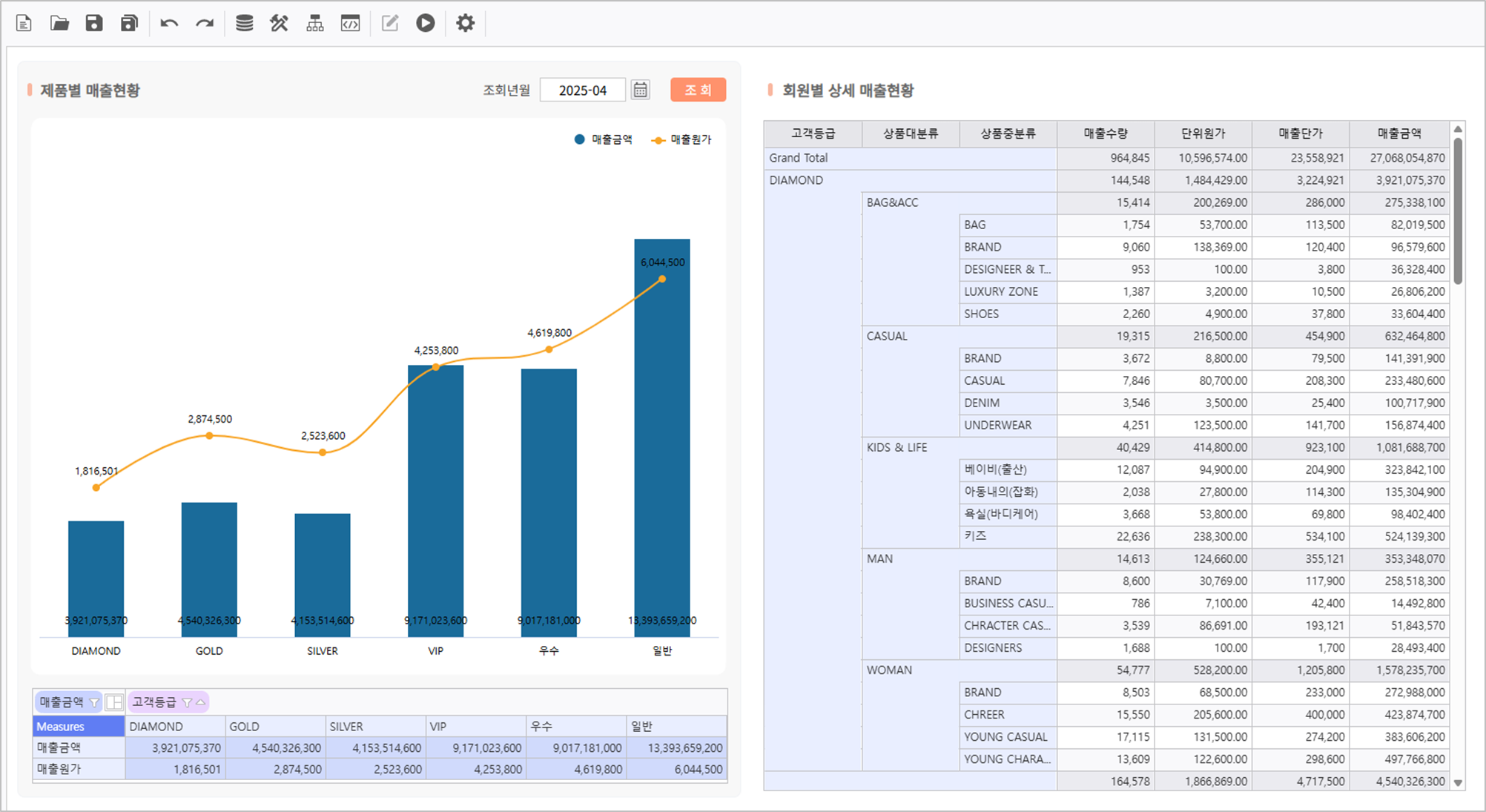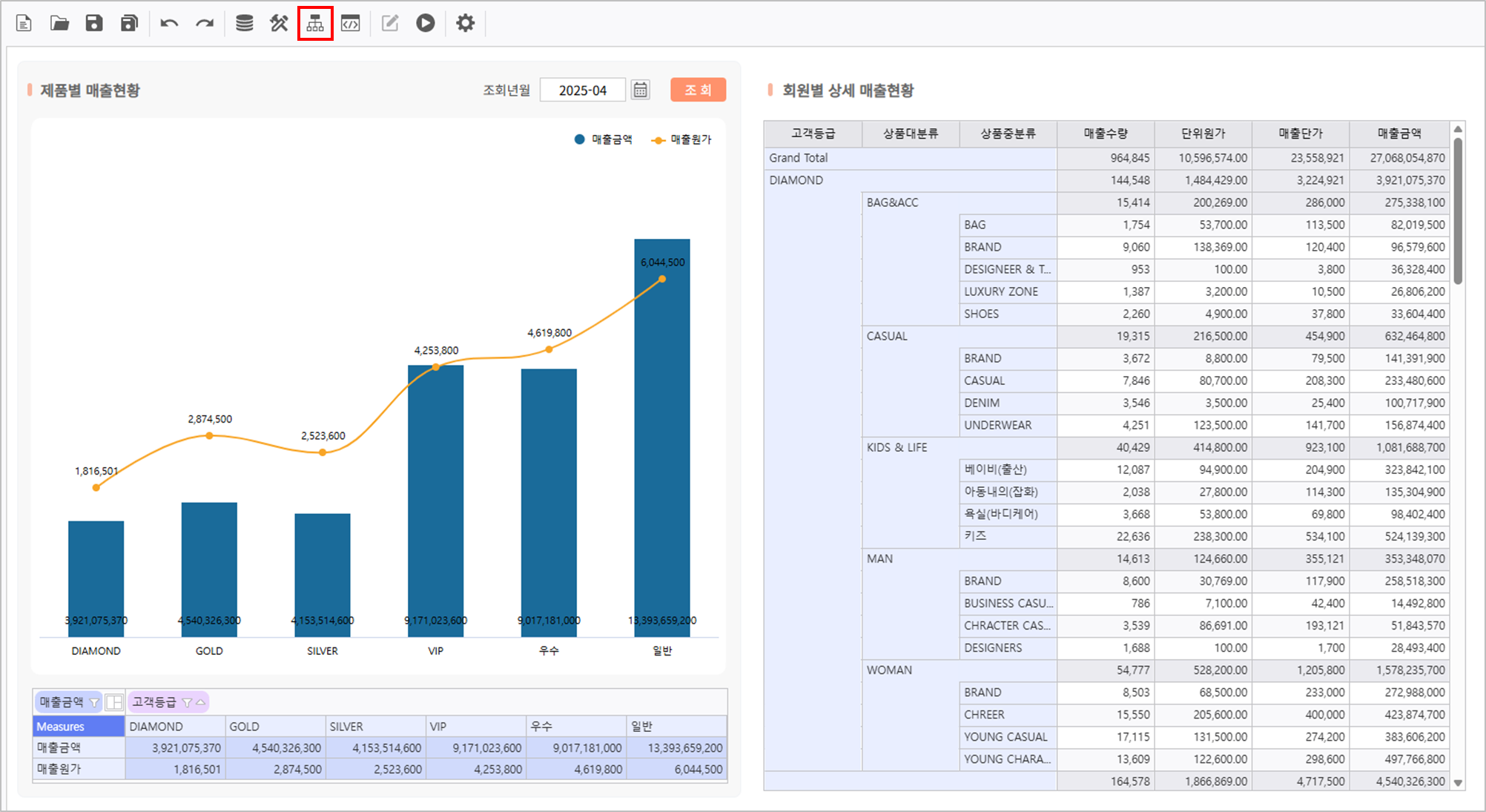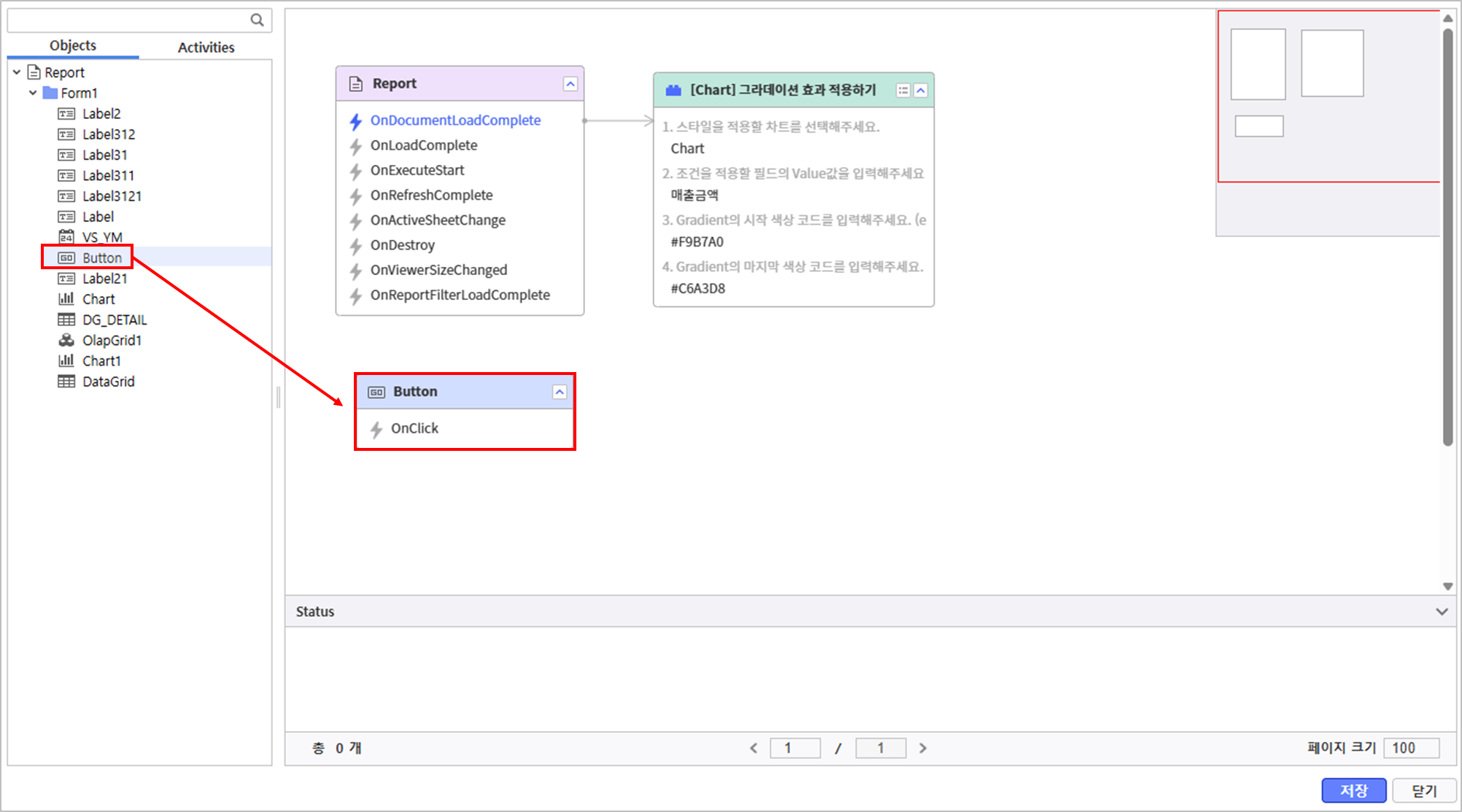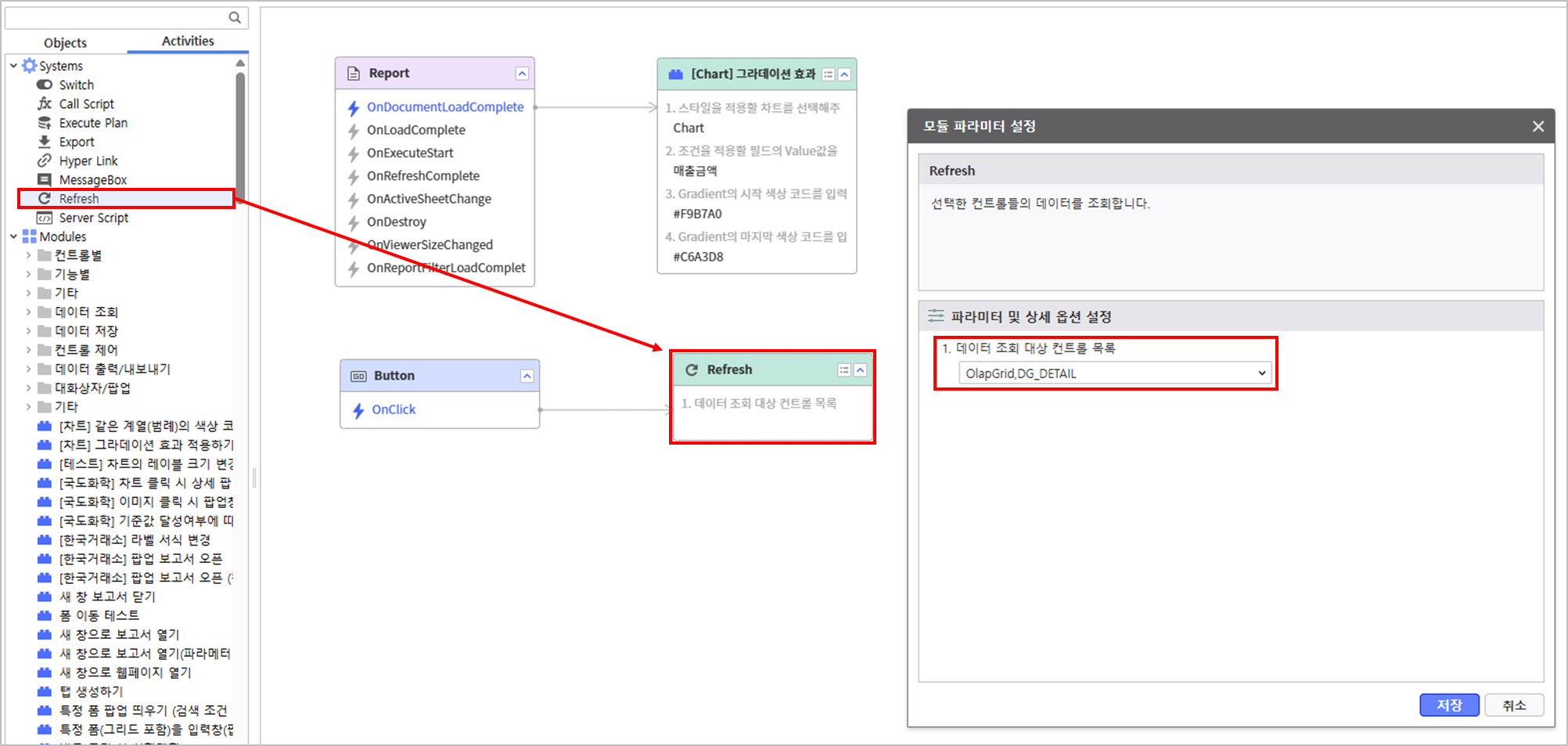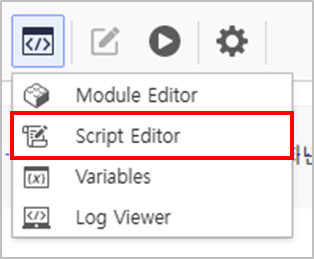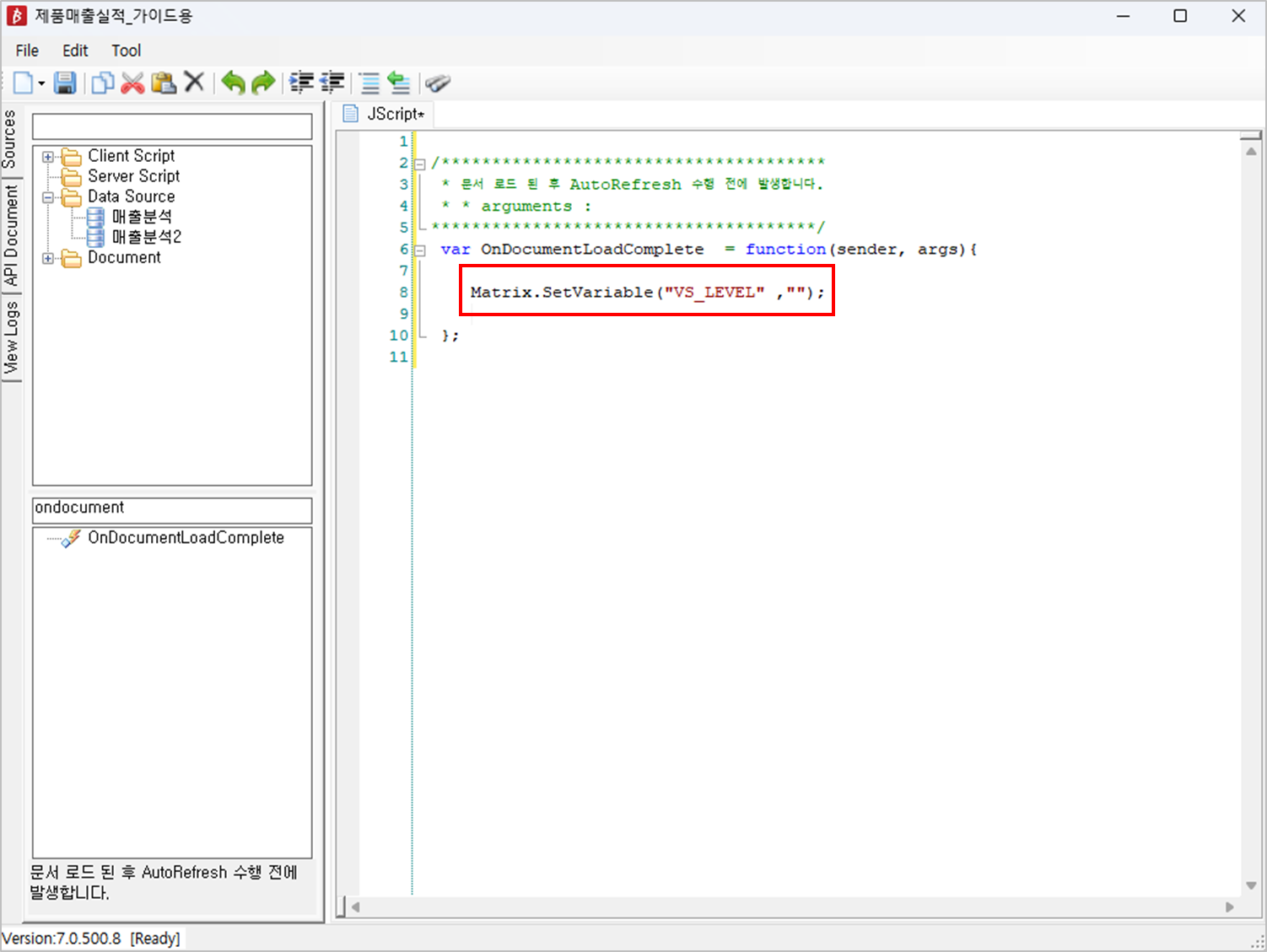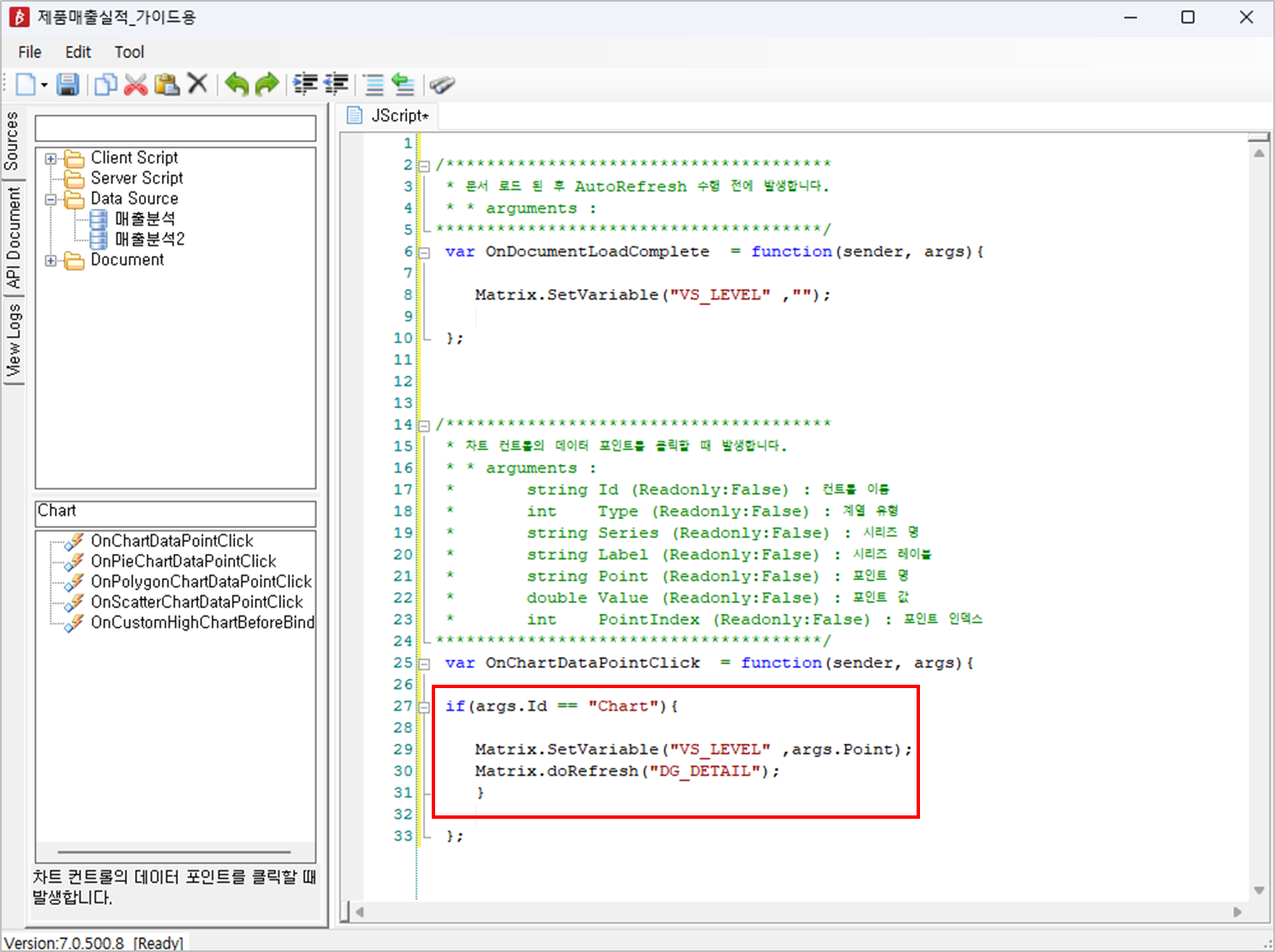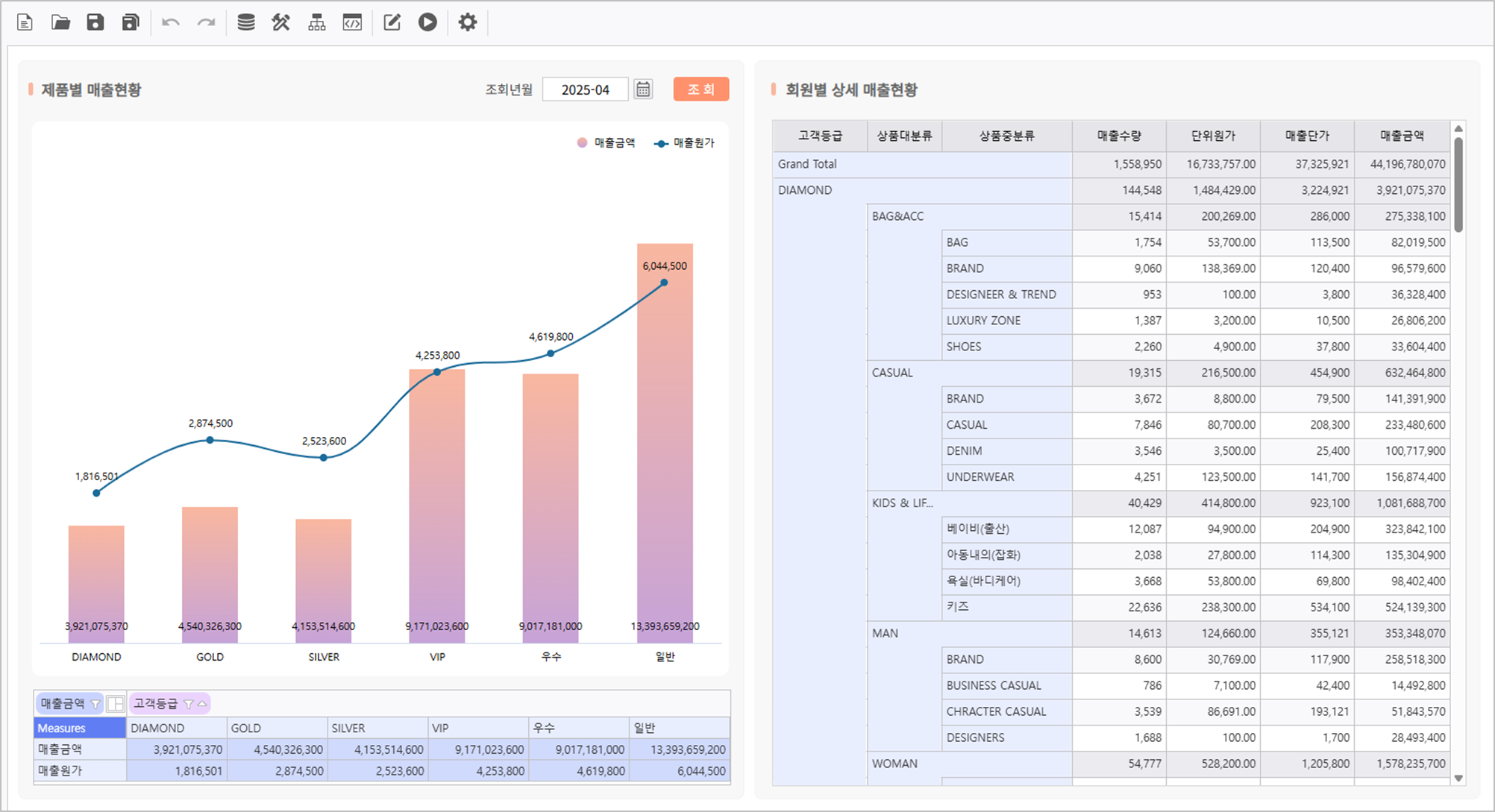Target Screen |
|---|
Step 1. Set Query Condition
In i-AUD Designer, create a query condition Control and set query condition for data.
1.1 Create Control
- At the top menu, click UI Bot > Calendar, Label to create a label Control.
1.2 Set Properties of Each Control
- In the Properties Modification panel on the right, set the properties of the Calendar Control as below.
- Name : VS_YM
- InitDate : Now() or DATE(0,0,0)
Calendar Property Configuration Guide
For detailed information about Calendar Property Configuration, please refer to the Link.
Set the property of the Label Control.
Name Text Label Query Year and Month
1.3 Create a Query Button Control
- At the top menu, go to UI Bot > Button and create a Button Control.
- In the Properties Modification panel on the right, set the properties as the following.
- Name : Button
- Text : Search
- Background : #ff926c
- Verify that the Query Condition Control is placed as below image.
Step 2. Connect Chart to OlapGrid
Create and connect a OlapGrid and a Chart to display Sales Performance by Product.
2.1 Set OlapGrid
- Create a OlapGrid
- Go to UI Bot > Grid > "Olap-Grid"
Connect datasource using Sales Analysis META, and activate AutoRefresh.
Connecting OlapGrid DataSource
Right-click the OlapGrid > DataSource > i-META > Select META file
- Sales Analysis Location : TBD > Sample > 3.Templates > OLAP > "Sales Analysis"
AutoRefresh Activation
Activate AutoRefresh in the property panel on the right of the OlapGrid.
Query Item Query Condition Variable - Column : [Customer Tier]
- Data : [Sales Cost, Sales Amount]
[YM] :VS_YM Right-click to open Design menu, and modify the design property.
Field Setting Other Settings - [Measures] field position changed :
Column > Row
- Enable auto selection area
- Range : Right 5, Down 1
- Disable Using Paging
- [Measures] field position changed :
2.2 Chart Configuration
- Create a Chart Control
- Go to UI Bot > Chart, and select Chart
- In the property menu on the right, configure the Chart property.
- Olap-Grid : Form1.OlapGrid
Click the Design menu to modify the design property.
Default Series Axis Legend - Data Label : Value
- [Sales Cost] > Chart Type : Line Chart
- [Sales Cost] Axis : Y2
- [Sales Cost] > Other > Sort Label : TopCenter
- [Sales Amount] > Other > Sort Label : BottomCenter
- Y1 Axis : Display Disabled
- X Axis > Design : Major Grid Line width 0
- Position : Top, Right
- Direction : Horizontal
Verify that the report is working as expected.
Step 3. Set ListGrid
Set a ListGrid to display Detailed Sales Performance.
- Go to UI Bot > Grid and create a ListGrid.
- Set properties of the ListGrid.
- Name : DG_DETAIL
- AutoRefresh : Activate
Connect data source using Sales Analysis META, and activate AutoRefresh.
Query Item Query Condition Variable [Customer Tier, Product Category, Product Subcategory,
Sales Quantity, Unit Cost, Sales Cost, Sales Amount][YM]
:VS_YM [Customer Tier] @:VS_LEVEL Setting Variable Names
For more information about AUD Platform Variables, please click here.
- VS_YM :
Variable for querying data based on date value of the Calendar Control
- VS_LEVEL :
Variable for querying ListGrid value based on [Customer Tier] data.
Step 5. Utilizing in Script Editor
- VS_YM :
Click the Design Menu, to modify the design property.
Setting > Default Setting > Group - View Header > Row : Disable
- Group : [Customer Tier, Product Category, Product Subcategory]
- Subtotal Position : Top
- Grand Total Position : Top
Verify that the report is working as expected.
Step 4. Utilizing Process Bot
Set a module for Chart Design Effect and Report Update.
4.1 Chart Gradient Effect Application Module Setting
- Click the Process Bot icon at the top.
- In the Object tab, double-click and place the Report.
- Load a module that sets the Chart gradient effect, connect with OnDocumentLoadComplete event of the Report,
and click Number 4 icon for parameter setting.- Module Name : "[Chart] Gradient Effect Application"
- Set the parameters of the module as below and Click Save button.
- Target Chart for Style Application : Chart
- Field Value to Apply Condition : [Sales Amount]
- Gradient Start Color Code : #F9B7A0
- Gradient End Color Code : #C6A3D8
4.2 Refresh for Query Button Module Setting
- Process Bot > Object 탭에서 Button을 선택하여 배치합니다.
- In the Activities tab, click system module, Refresh, connect with Button's OnClick event, and set query target parameter.
- Query Target Control List : OlapGrid, DG_DETAIL
Step 5. Utilize the Script Editor
5.1 Writing a Variable Initializing Script
- In the report's top menu, click Edit Group > Script Editor.
- Search and double-click an API to use.
- API to Use : OnDocumentLoadComplete
Write the following script to initialize a variable.
5.2 Write a Script to Refresh the DataGrid when a Chart is Clicked
- Search and double-click an API to use.
Write a script for an event when the Chart is clicked.
Verify that the report is working as expected.

